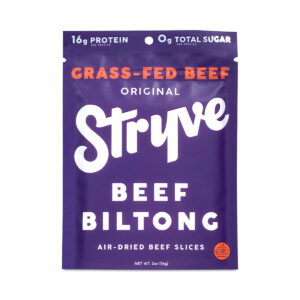- Essential Quick Meal Ingredients
- Efficient Meal Planning Strategies
- Simple Grocery List Creation
- Time-Saving Cooking Techniques
- Budget-Friendly Shopping Tips
- Incorporating Leftovers for Quick Meals
When it comes to grocery shopping, having a well-thought-out list of essential ingredients can transform your meal prep experience, making it quick, healthy, and satisfying. Focus on versatile items that can be used in multiple meal options while catering to various dietary needs. Here are some key ingredients that should always be on your shopping list:
- Whole Grains: Look for brown rice, quinoa, or whole grain pasta. These grains provide fiber and essential nutrients, helping you feel fuller for longer. Incorporate them into salads, bowls, or as side dishes for your meals.
- Lean Proteins: Stock up on chicken breast, turkey, or plant-based proteins like tofu and lentils. These ingredients offer a great source of protein for everyone, and they can be grilled, stir-fried, or blended into smoothies.
- Fresh Vegetables: Prioritize colorful options such as bell peppers, spinach, and broccoli. Not only does this add variety to your meals, but it also boosts your nutrient intake. Frozen veggies can also be a convenient choice, as they preserve nutrition while saving you prep time.
- Fruits: Apples, bananas, and berries are perfect for snacking and can easily be added to breakfast or desserts. Choose seasonal and local fruits for both cost savings and better flavor.
- Canned Goods: Beans, tomatoes, and coconut milk offer shelf-stable options. They are budget-friendly and provide a quick way to add flavor and texture to your dishes.
- Healthy Fats: Don’t forget about ingredients like avocados, nuts, and olive oil, which not only enhance the taste but also support heart health. Avocados can be mashed on toast or added to salads for a creamy texture.
- Spices and Herbs: Stock your pantry with a variety of spices and dried herbs, such as garlic powder, cumin, and basil. These can elevate simple dishes without extra calories, providing robust flavors that even the pickiest eaters will enjoy.
- Dairy or Dairy Alternatives: Yogurt, cheese, or plant-based milk are excellent sources of calcium. Use yogurt as a base for smoothies or grab a cheese slice to pair with fruits for a quick snack.
As you shop, pay special attention to food safety by ensuring that items are within their expiration date and check for any visible damage on packaging. When purchasing perishables, opt for organic and locally-sourced options whenever possible to support sustainable practices and enjoy the freshest flavors. Additionally, if you’re opting for online grocery shopping, choose retailers that offer clear visibility into their sourcing practices, as well as secure payment methods to ensure your details remain safe.
For a budget-friendly approach, consider shopping at local farmers’ markets, which often have fresher ingredients at competitive prices. Not only will you find great deals, but you’ll also support your community and reduce environmental impact by minimizing transportation.
Incorporating these essential quick meal ingredients into your pantry will empower you to create a range of healthy and satisfying meals while saving time throughout the week. Whether you’re racing through a busy evening after work or looking for nutritious choices during the weekend, having the right ingredients on hand can simplify your cooking experience and make healthy eating a pleasure.
Efficient Meal Planning Strategies
To streamline meal planning, begin by establishing a clear structure for how you want to organize your week. This can include setting aside specific times for cooking, preparing ingredients in advance, and creating a rotation of meals to keep your options varied yet simple. Start by selecting a day, like Sunday, to plan and prep. During this time, dedicate yourself to reviewing the week ahead, assessing your schedule, and deciding what meals you can prepare in advance.
Incorporate a meal calendar that allows you to visualize your meals at a glance. For instance, create a simple table to help you plan:
| Day | Meal | Prep Time |
|---|---|---|
| Monday | Chicken Stir-Fry | 30 minutes |
| Tuesday | Quinoa Salad | 15 minutes |
| Wednesday | Taco Night | 25 minutes |
| Thursday | Pasta Primavera | 20 minutes |
| Friday | Homemade Pizza | 30 minutes |
Having this structure allows you to maximize efficiency as you can prepare cooking ingredients such as chopping vegetables, marinating proteins, or pre-cooking grains in larger batches. Your goal should be to minimize daily cooking time while keeping meals fresh and enjoyable.
When planning, consider how to reuse components of previous meals. For example, grilled chicken from Monday can be repurposed in Tuesday’s quinoa salad, while leftover vegetables from the stir-fry can be included in Friday’s pizza. This not only saves time but also reduces waste, making your meal planning both efficient and sustainable.
Utilizing technology can also enhance your meal planning process. Meal planning apps can help manage your recipes, shopping lists, and even allow you to keep track of what’s in your pantry. These digital tools facilitate a more organized approach, providing reminders for perishable items that may be nearing expiration.
Another effective strategy is batch cooking. Prepare larger quantities of versatile grains, proteins, and vegetables, then store them in individual containers. This approach allows for easy assembly of quick meals during the week, reducing time spent cooking each night. You can also freeze pre-cooked meals in portion sizes for those evenings when you simply want to heat and eat, ensuring you always have a nutritious option on hand.
Finally, stay flexible. Eventual deviations from your meal plan can happen due to unexpected events or cravings, so having a few quick backup options will help you maintain balance. Keep some easy-to-cook staples, like frozen veggies and quick-cook grains, in your pantry for those moments when you need a last-minute meal solution. Embracing a flexible yet structured approach to meal planning will empower you to enjoy a variety of quick, healthy options throughout the week.
Simple Grocery List Creation

- To begin crafting your grocery list, it’s essential to establish a framework based on your meals for the week. For instance, categorize your list into sections like proteins, grains, vegetables, fruits, and pantry staples. This will simplify the shopping process and ensure you gather everything you need.
- Embrace Meal Themes: Designate specific themes for each day, such as Meatless Monday, Taco Tuesday, or Stir-Fry Wednesday. This not only makes grocery shopping more focused but also introduces variety and excitement into your meals. For example, if you’re planning for Taco Tuesday, include ingredients like tortillas, black beans, and a variety of toppings like lettuce and salsa on your list.
- Prioritize Versatility: When selecting fresh produce, think about versatility for your meals. Ingredients such as spinach, bell peppers, and zucchini can seamlessly fit into multiple dishes, from salads to stir-fries. For instance, buying a large bag of spinach can be used in salads, smoothies, or sautéed as a side dish.
- Plan for Batch Cooking: Consider items that lend themselves well to batch cooking. Proteins like chicken breasts or chickpeas can be cooked in bulk and utilized throughout the week, saving both time and effort. This not only fills your pantry with ready-to-eat options but also allows for creativity in the kitchen.
- Include Healthy Snacks: Don’t forget to add some healthy snack options to your list such as nuts, yogurt, or hummus with sliced veggies. These snacks can replace unhealthy cravings and keep your energy levels steady throughout your busy day.
- Utilize Apps for Support: Leverage grocery list apps that sync with meal planning tools to maintain a streamlined shopping experience. By having your list easily accessible on your smartphone, you can modify it on-the-go, ensuring you don’t forget essential items.
- Emphasize Local and Seasonal Goods: Make a point to visit local markets for fresh, seasonal produce, which not only supports your community but usually provides better flavors and nutrition than out-of-season imports. Ingredients like tomatoes in summer or squash in fall can significantly enhance your meals.
- Safety First: When shopping online, ensure that the retailer provides transparent information about the sourcing of their products. Check reviews and ratings to confirm that others have had a satisfactory experience. Also, prioritize freshness and proper packaging, especially for perishables.
By following this simple framework for grocery list creation, you’ll find that shopping becomes less of a chore and more of a strategic, enjoyable part of your meal prep. A well-structured grocery list not only cuts down on time spent in-store but also transforms how you view meal planning, making healthy eating easier and more manageable.
Time-Saving Cooking Techniques
To optimize your cooking time, consider using techniques that streamline your prep and cooking processes. One of the most effective methods is meal prepping. Dedicate a specific time during the week to prepare several portions of main ingredients. For instance, cook a large batch of quinoa or brown rice, roast various vegetables, and prepare proteins like chicken or tofu in bulk. This way, you can mix and match these components throughout the week, creating diverse meals without the need for daily cooking sessions.
Another technique is to utilize one-pan or one-pot cooking. Dishes like sheet pan vegetables or one-pot pastas allow you to combine ingredients and cook everything simultaneously, reducing the number of dishes and saving clean-up time. Additionally, these methods often help to develop richer flavors as ingredients cook together.
Using fast-cooking or pre-cooked ingredients is also beneficial. Look for precooked grains, canned beans, or frozen vegetables that can be added directly to your meals, cutting down on the time required for preparation. Instant pots or pressure cookers can also be game-changers, allowing you to cook meals in a fraction of the time it would normally take on the stovetop.
Incorporating kitchen gadgets like food processors can significantly reduce prep time. Chopping vegetables, grating cheese, or making sauces can be done in seconds, making your cooking process swifter and more efficient. Additionally, consider employing the technique of mise en place, where you prepare and organize every ingredient before you start cooking. This proactive approach minimizes chaos in the kitchen and ensures an efficient cooking routine, allowing you to focus on the actual cooking rather than the gathering of ingredients.
“Cooking is like love. It should be entered into with abandon or not at all.” – Harriet Van Horne
Don’t overlook the power of quick cooking methods like sautéing, broiling, or stir-frying, which can transform ingredients into delicious meals in under 30 minutes. Employing high heat with a bit of oil can yield beautifully caramelized vegetables while keeping them crisp-tender—perfect for quick stir-fries or sheet pan meals.
Lastly, embrace leftovers not just as a side note, but as a key component of your cooking strategy. Repurpose them into new meals by adding fresh ingredients or a different sauce. For example, leftover grilled chicken can quickly be turned into a wrap or a salad the next day. Utilizing your leftovers creatively saves both time and reduces food waste, making your kitchen practices both efficient and eco-friendly.
With these time-saving techniques, cooking can become a more enjoyable and less time-consuming part of your daily routine, allowing you to focus on delicious, nutritious meals without the stress.
Budget-Friendly Shopping Tips

To maximize your grocery budget while still prioritizing nutritious and quick meal options, begin by comparing prices between local grocery stores and online retailers. This will give you insight into where you can find the best deals on needed ingredients. Utilize weekly circulars or digital coupons to your advantage; planning your shopping trip around sale items can result in significant savings over time. Additionally, buy in bulk when possible, especially with staples like grains, beans, and frozen vegetables, which often come at a lower cost per serving. Remember to always measure the costs per unit to ensure you’re making the most cost-effective purchases.
Consider trading brand-name items for generic or store brands, which can be just as good but usually come at a lower price. Likewise, seasonal produce is not only more affordable but also fresher and tastier. Planning meals around these ingredients can enhance your meals while being easy on your wallet. When possible, choose larger quantities of items that have a long shelf-life to give yourself flexibility throughout the month as you prepare your meals.
Don’t forget to keep an eye on your pantry and fridge before shopping. Inventory what you already have on hand to craft meals that minimize waste and maximize flavor. This reduces unnecessary purchases of items you already own. Lastly, avoid shopping when hungry, as this can lead to impulse buys and overspending on snacks and unnecessary items. By being strategic and informed about your grocery shopping, you can enjoy delicious quick meals without breaking the bank.
Incorporating Leftovers for Quick Meals
Incorporating leftovers into your meals can not only save you time but also enhance the variety and flavor of your weekly menu. Rather than viewing leftovers as mere remnants of past meals, think of them as a foundation for new culinary adventures. For instance, if you make a large batch of roasted vegetables, they can serve as a delightful addition to frittatas, grain bowls, or even a fresh salad the next day.
Think Versatile: Leftover proteins are often the heroes of quick meals. For example, grilled chicken can be easily turned into a zesty chicken salad or a filling wrap with some fresh greens and your favorite sauce. Similarly, leftovers from a stir-fry can find their way into a hearty soup the next day, simply by adding broth and spices.
Creative Use of Grains: If you have extra quinoa or brown rice from a previous meal, don’t discard it! These grains can be the base of a quick fried rice, or they can be tossed into a salad to add texture and nutrition. A simple mix of leftover grains, chopped veggies, and a light vinaigrette creates a refreshing dish that’s both filling and satisfying.
Make Use of Sauces: Consider making double batches of sauces or dressings to keep things interesting. If you have extra pesto, for example, it can elevate a simple pasta dish, be spread on sandwiches, or drizzled over roasted vegetables for an extra flavor boost.
When it comes to soups, any combination of leftover vegetables, grains, and proteins can turn into a delicious meal in no time. Just add your favorite broth, herbs, and spices to create a comforting dish that requires minimal effort. Alternatively, leftover pizza can be easily transformed into a breakfast option by topping it with eggs, right in the oven or on the stovetop.
To keep things exciting, try themed nights based on your leftovers. For example, if you have a Mexican-themed meal on Monday, repurpose the leftovers into a Tex-Mex casserole on Tuesday. By planning around your leftovers, you reduce food waste and make your meal prep more environmentally friendly.
Storage is Key: To make the most of your leftovers, proper storage is essential. Use airtight containers to preserve freshness and label them with dates to keep track of when they were made. This minimizes the risk of spoilage and helps you decide what to consume first. When reheating, ensure that food reaches a safe temperature of at least 165°F to maintain safety and quality.
Don’t overlook the value of freezing leftovers. If you know you won’t consume them within a few days, portion them out in freezer-safe containers. This allows you to quickly grab a nutritious meal on a busy night without the hassle of cooking from scratch. Just remember to date your containers so you can enjoy them at their best quality.
FAQ
- What are some tips for saving money while grocery shopping?
- Consider utilizing coupons, shopping sales, and buying in bulk. Additionally, plan meals around seasonal produce and store brand items, which are usually less expensive and just as nutritious.
- How can I use leftovers in my meal planning?
- Leftovers can be repurposed into new meals, such as transforming grilled chicken into wraps or salads. By creatively incorporating leftovers, you reduce waste and save cooking time throughout the week.
- What should I include in a quick meal grocery list?
- Your list should include versatile staples like whole grains, lean proteins, fresh vegetables, fruits, and canned goods. Also, consider healthy snacks to maintain energy throughout your busy days.
- How do I find the best deals at the grocery store?
- Check for weekly ads, use store loyalty programs, and compare prices between different stores. Apps that highlight deals and provide digital coupons can also help you save more.
- Is it cheaper to buy fresh produce or frozen?
- Frozen produce can often be cheaper than fresh, especially when items are out of season. However, fresh produce has a different taste and nutrient profile; choosing seasonal fresh options can offer both quality and cost-effectiveness.
- How can I create a balanced and budget-friendly meal plan?
- Focus on incorporating a variety of proteins, whole grains, and seasonal vegetables in your meals. Use batch cooking strategies to prepare meals that are economical and versatile throughout the week.
- How can technology help with meal planning?
- Meal planning apps can help you organize recipes, create shopping lists, and track what you have in your pantry. They can also remind you about expiration dates and prompt you to use ingredients before they go bad.
New Customers Offer!
Free Gift for the new customer
$24 Value, When You Subscrib Visit Thrive Market












